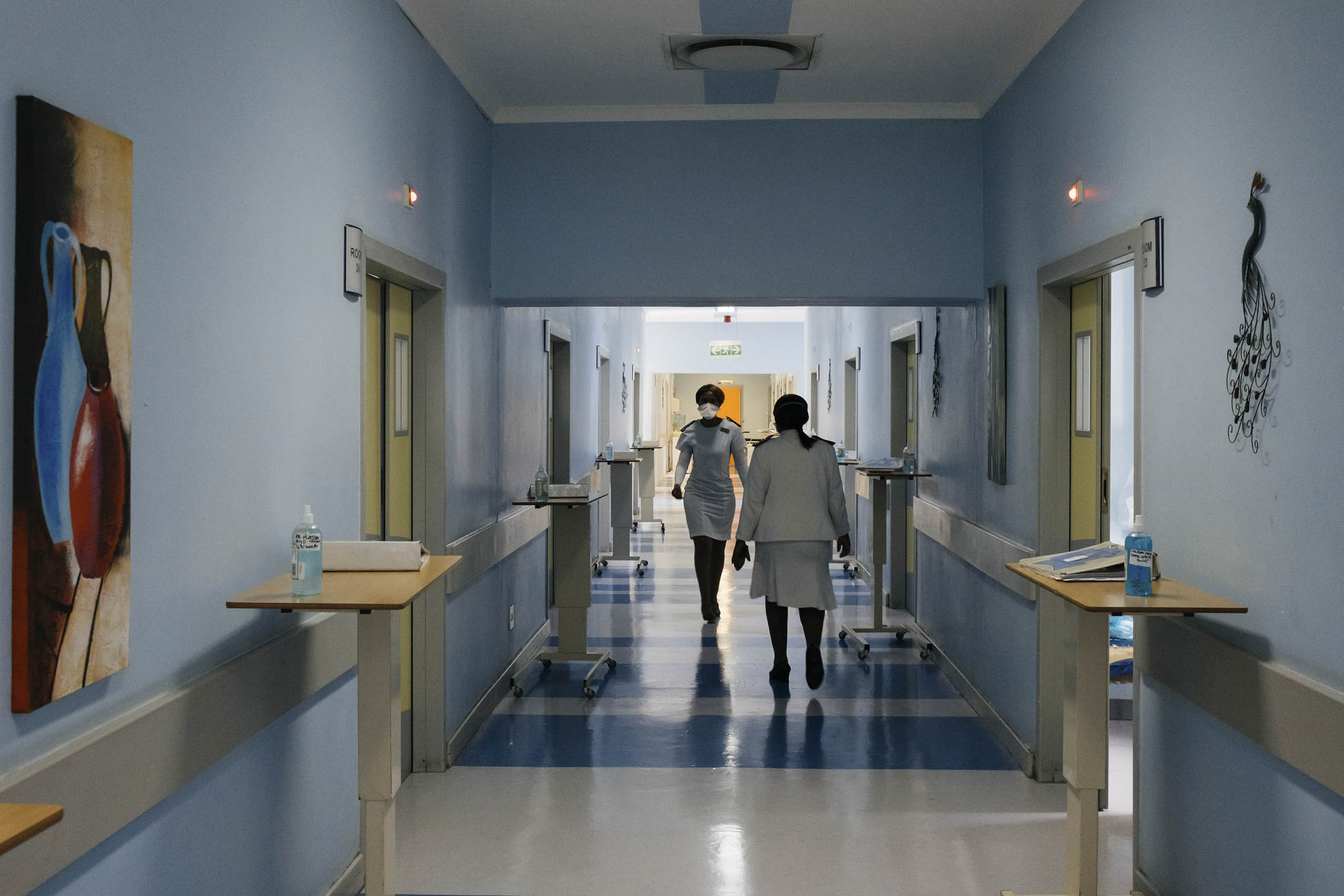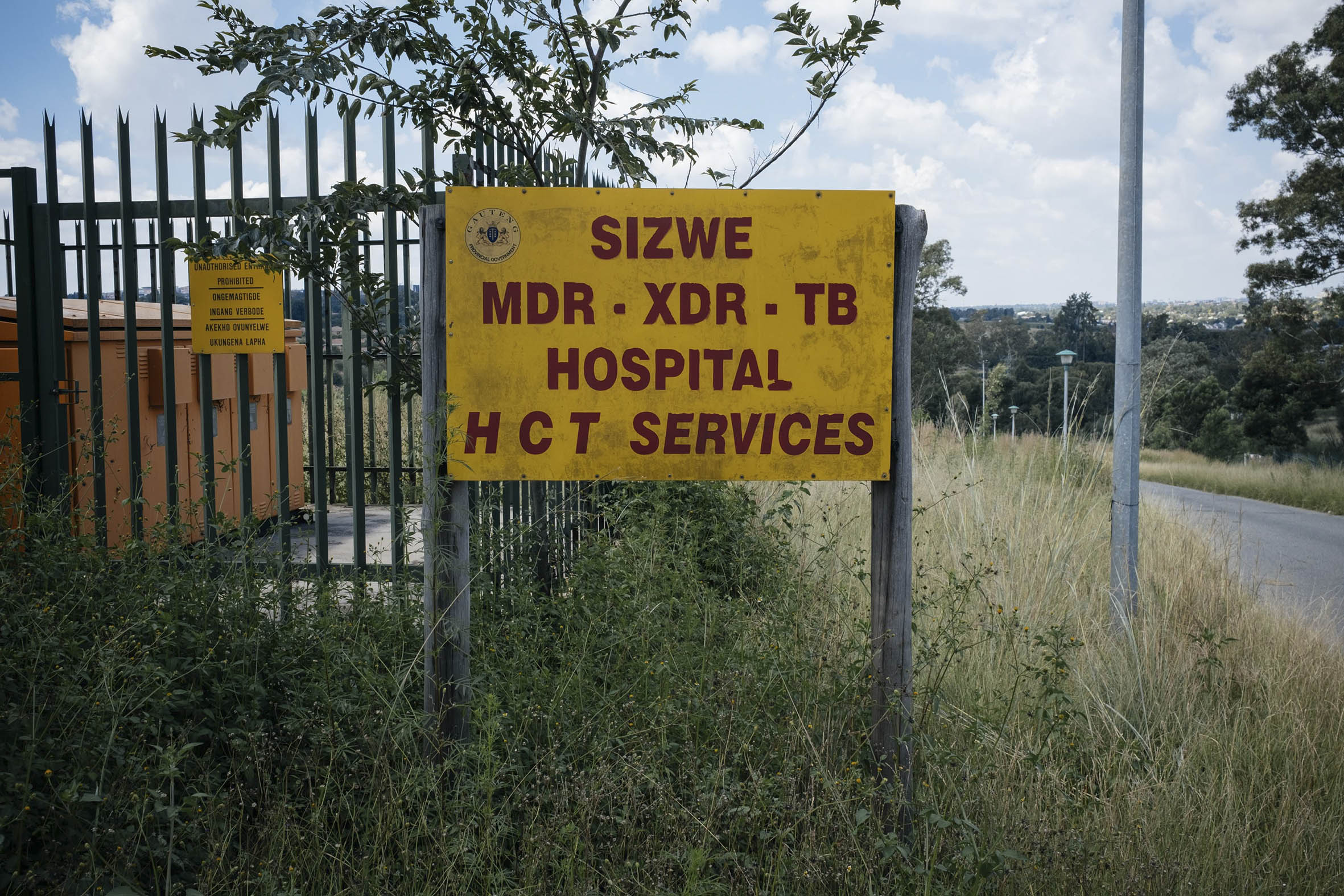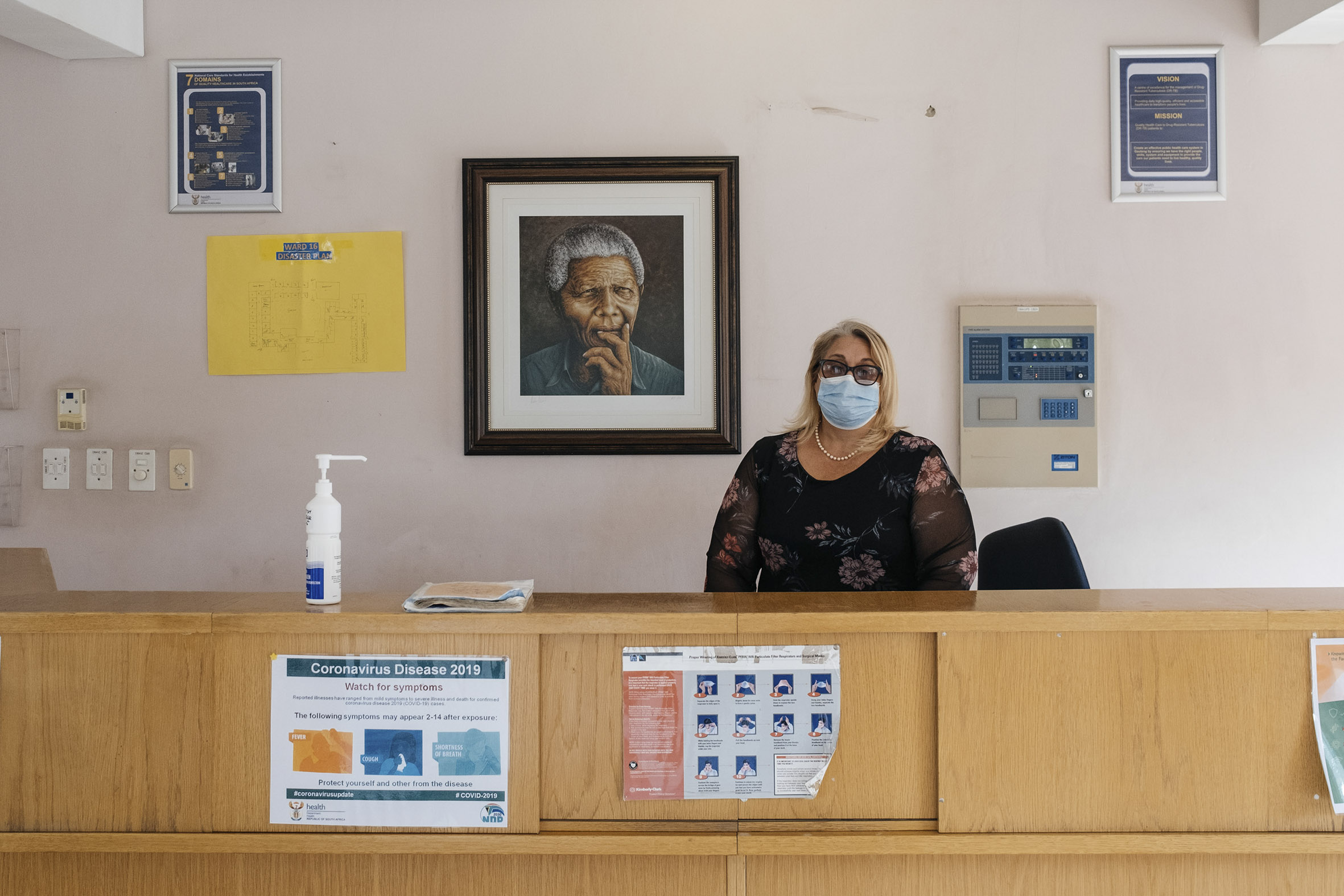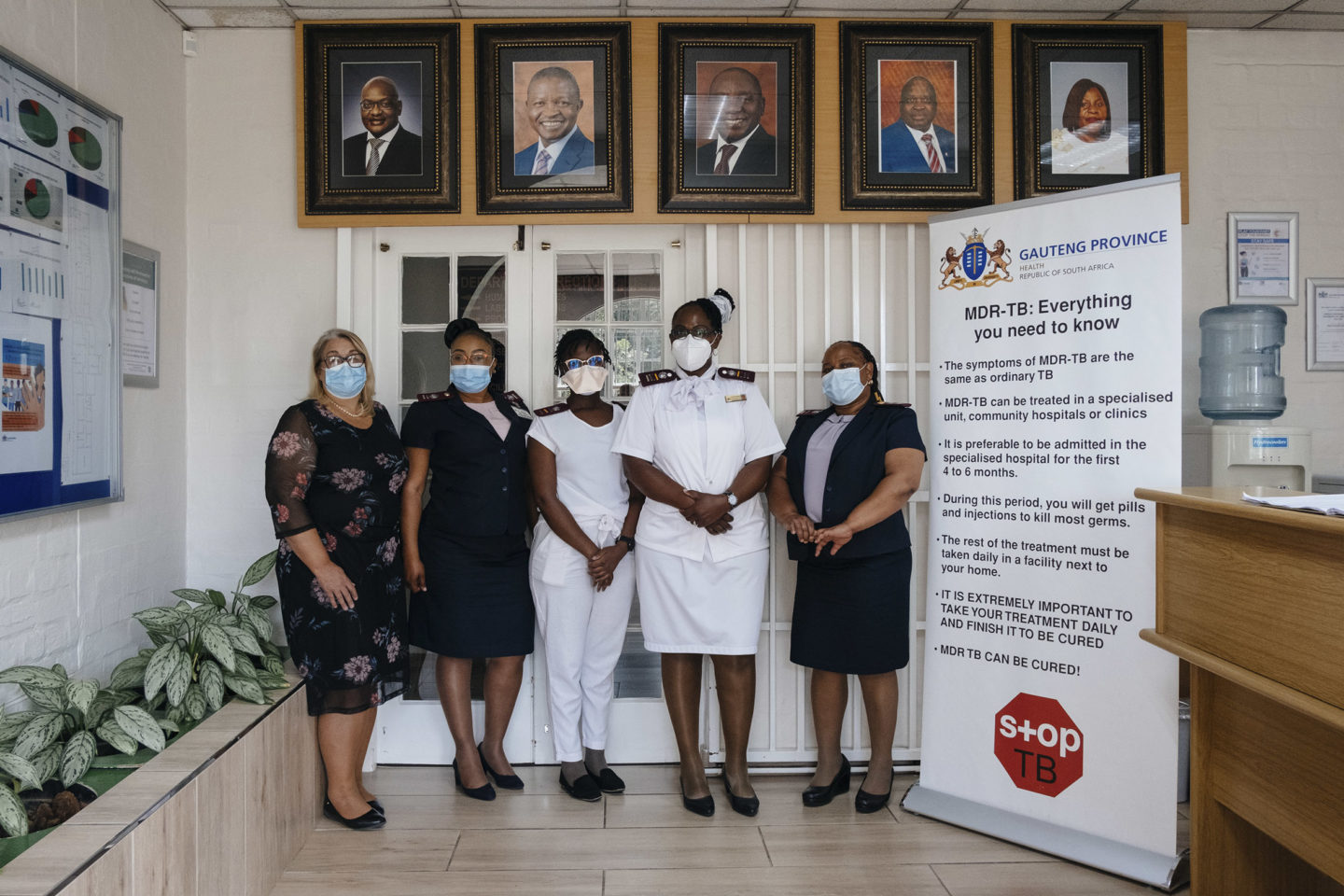Tuberculosis: South Africa’s forgotten killer
Sidelined during the Covid-19 pandemic, the country’s deadliest disease has been working under cover.
Author:
10 March 2022

At a 1982 tuberculosis conference in Pretoria, one of the presenting doctors stressed that, “while one entertains a high index of suspicion for tuberculosis, one must not forget that there are other conditions which may present in a similar fashion”. Forty years later, that omen looks to have been cruelly turned on its head.
A persistent cough. High fever. Night sweats. Not very long ago, patients presenting with these symptoms in South Africa were sent straight for a tuberculosis test. Not so since the onset of the Covid-19 pandemic. The similarity between tuberculosis and Covid-19 symptoms, and the resultant failures to exclude for tuberculosis among patients who present with them, is one of the reasons that untreated cases of South Africa’s most chronic killer have likely surged under the cover of lockdown.
Another has to do with the nature of South Africa’s approach to tuberculosis, which is passive and does not involve active case finding. The country’s public healthcare system does not go looking for tuberculosis. It waits for tuberculosis to walk through the door. But hard lockdowns prevented people from doing just that. Meanwhile, large parts of the country’s health infrastructure were repurposed for Covid-19 treatment – especially during waves of infection, when outpatient services were shut down and surgeons reassigned.

The likely and devastating result, according to some leading tuberculosis experts, is that we have missed swathes of new infections, and possibly even deaths. Bavesh Kana, a director at the Centre of Excellence for Biomedical TB Research, said that the last two years have “seriously compromised the gains we had made with tuberculosis”. South Africa’s long fight against the disease, he said, has been set back “five to seven years”.
At the Sizwe Hospital for Tropical Diseases, Gauteng’s only hospital for drug-resistant tuberculosis, the sentiment is much the same. Xavier Padanilam, the hospital’s chief medical officer, said that “tuberculosis was pushed to the sidelines” during Covid-19 lockdowns, leading to a “dramatic drop” in diagnoses and delayed referrals to specialised units like Sizwe. The later a patient is referred for the treatment of drug-resistant tuberculosis, the higher their chance of developing often deadly complications.
It is difficult to gauge the scale of the upturn in tuberculosis. But there are some sure signs that it is coming. Cases of paediatric tuberculosis at Sizwe dropped dramatically during Covid-19 lockdowns, for instance. “We didn’t see children,” said Rianna Louw, the hospital’s CEO. “They weren’t admitted anywhere.” Padanilam added that “there is just no way” that the number of children falling ill can drop so drastically while adults are still sick.
More than a private matter
Tuberculosis is incredibly infectious by the airborne route – far more so than Covid-19. Viable tuberculosis, coughed into a room, will live there for days afterwards. Missing diagnoses means that cases can go undetected for years, infecting along the way. “It’s a crisis,” said Gary Maartens, who heads the Division of Clinical Pharmacology in the University of Cape Town’s department of medicine. “And it’s not just a problem for the individual. It’s a public health crisis.”
Missed diagnoses means missed opportunities to get patients into treatment, contain new infections and interrupt further transmission. This will likely lead to an increase in excess death. Kana, who thinks that a “massive amount” of tuberculosis deaths are already likely wrapped up in the excess deaths usually ascribed to Covid-19, said “we have missed many people we could have saved”.
He added that lockdown interruptions in tuberculosis patients’ treatment likely means that tuberculosis is building resistance and “creating a very scary breeding ground for future drug resistant tuberculosis outbreaks”.

The proportion of drug-resistant cases is a good rule of thumb for how well a country’s tuberculosis programme is working. By this metric, South Africa had been headed in the right direction. From a starting point of zero – drug resistant tuberculosis was virtually a death sentence when it first emerged in the mid-2000s – Sizwe had achieved cure rates of around 85%. “We were very excited about the way the country was going,” said Louw.
Those gains may now be under threat. As lockdowns are eased, the number of patients being admitted to Sizwe is already starting to increase. There are many readmissions amongst these patients, which suggests that there have been interruptions to their treatment. With the resultant complications, the hospital’s death rates have also started to climb. There was a time when Louw and her staff were confident they would never again see a 20% death rate. That number recently reached 25%.
Killer as old as time
Once described as the “Captain of all these Men of Death”, tuberculosis is as old as time. The spines of Egyptian mummies were deformed by the disease. Hindu physicians observed it some 2 000 years after that. In Deuteronomy, Moses warned that, “The Lord shall smite thee with a consumption, and with a fever, and with an inflammation,” and, of all the diseases, Hippocrates described phthisis (pulmonary tuberculosis) as “the most difficult to cure, and the most fatal.”
But if the origins of the disease are, in the words of one group of medical historians in the 1980s, “hunched in the mists of antiquity,” the destruction it has wrought in South Africa has been decidedly modern. Colonial occupation, mineral discovery and industrialisation provided the conditions for tuberculosis to flourish in South Africa, which, like the rest of the continent, had until then been spared the worst ravages of the “White Plague”. The lungs of miners housed in cramped compounds and sent into underground shafts every day were virgin territory for the disease. So were those of their families in the former homelands, who cared for them once they fell ill.
After a century of devastation, tuberculosis in South Africa had been on the way down. Until HIV. Working in tandem, one death the other destruction, tuberculosis and HIV spun an epidemiological web that proved incredibly difficult to untangle. South Africa became home to the world’s worst pandemic collision of the two. In the two years between 2005 and 2007, at the height of the country’s Aids crisis, cases of drug resistant tuberculosis tripled.

Since those dark days, however, South Africa has staged an uneasy recovery, driven by considerable strides in new diagnostic technologies, successes in getting patients started on treatment on time and, crucially, ensuring they remain on treatment. On the one hand, tuberculosis services tend to be protected from broader problems in the primary healthcare system. On the other, South Africa’s tuberculosis programme is written in pencil while others around the world tend to be written in stone – it is adaptable and quickly changed. When Bedaquiline, now indispensable in the treatment of drug-resistant tuberculosis, was still a new and scary drug, it was made available here well before the rest of the world.
All signs are that South Africa’s recovery has been dealt a serious blow over the past two years, however. Kana warned that for the country to get ahead of the disease again, “tuberculosis cannot remain a poorer cousin to Covid, or HIV, or anything else”. Important lessons will have to be learned from the Covid-19 pandemic, he said. A disease can be kept in check if huge resources are poured into the health system, for instance, or that vaccine development can be done when it is taken seriously.
All the while that South Africa has missed new tuberculosis diagnoses, the primary drivers of the disease – HIV and community transmission – have not disappeared. At almost every level, tuberculosis is a slow killer. Breathe it in and it will stay viable in your body for years waiting for the ideal dip in immunity – an operation, an HIV infection – before it strikes. As a result, tuberculosis epidemics unfold over decades, not the weeks we have become accustomed to with Covid-19. What the next decade of our fight against tuberculosis will look like now hangs in the balance. In Louw’s words, “tuberculosis has a long history, but it’s not over yet”.
